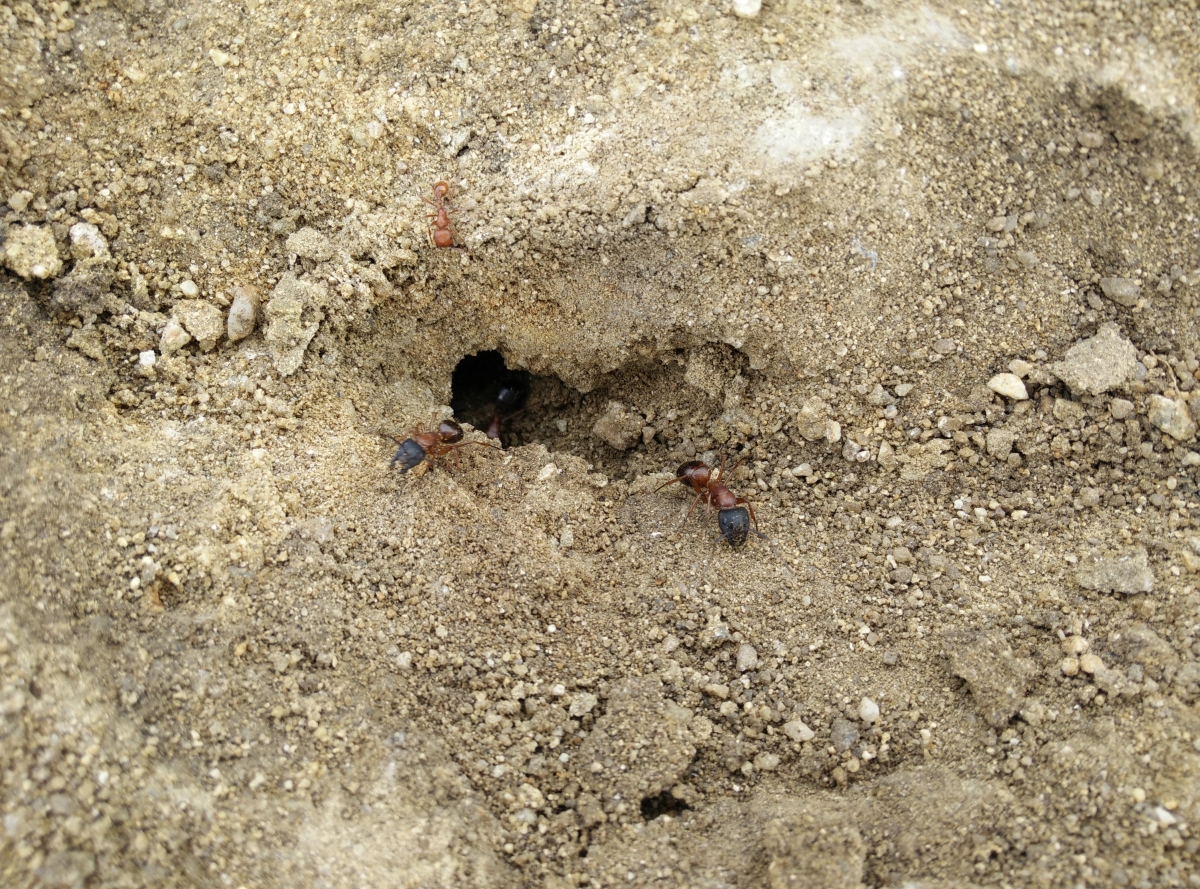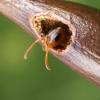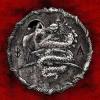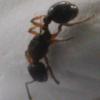Habitat: Dirt trail, chapperal
Length: ~11mm
Color, hue, pattern and texture: Red thorax, black/blue head, dark gaster
Distinguishing characteristics: Shy
Anything else distinctive: ---
Nest description: Large (~20mm) nest entrance
I saw these guys guarding the entrance but refused to come out until some nearby Pogonomyrmex wandered in. Even then they kept running back into the nest. You can see a Pogonomyrmex in the picture for size comparison. I've never seen any ant this huge or like this.



























